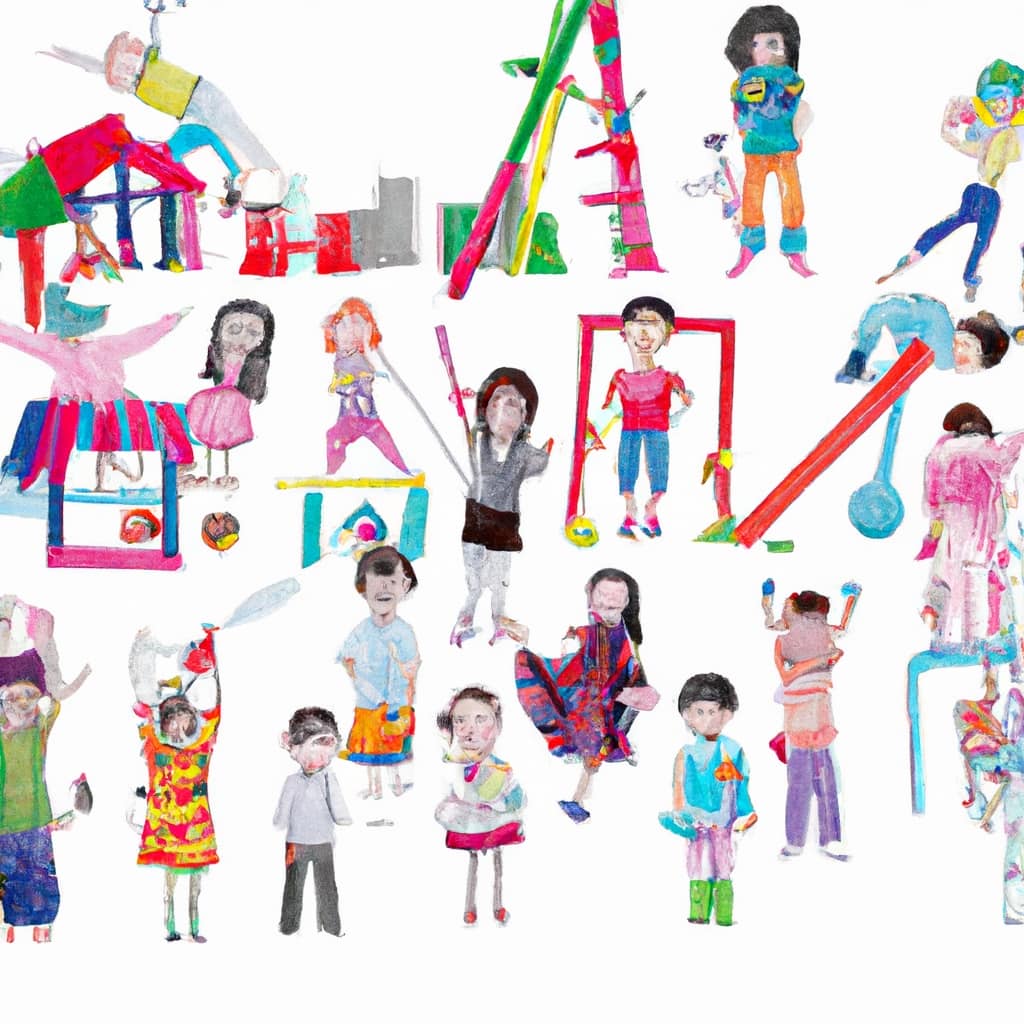As children grow and explore their surroundings, learning to control their emotional reactions is crucial for their overall growth. Understanding and regulating their emotions is not only important for their interactions with others but also influences their academic achievements.
By teaching children how to regulate their emotions, we equip them with invaluable tools that will serve them throughout their lives. In this article, we will explore the importance of emotional regulation in child development and discuss strategies to help children effectively navigate their emotions.
Key Takeaways
- Emotional regulation is crucial for a child’s overall growth and well-being.
- Teaching emotional regulation equips children with valuable tools that will benefit them throughout their lives.
- Modeling healthy emotional regulation is crucial for children to learn how to manage their own emotions effectively.
- Emotional regulation has a significant impact on social skills development, academic success, and positive relationships.
The Link Between Emotional Regulation and Overall Growth
Emotional regulation plays a vital role in my overall growth and well-being. It helps me recognize, understand, and manage my emotions effectively. It’s not just about controlling my emotions, but also about developing skills that support my cognitive development.
When I am able to regulate my emotions, I can focus better, problem-solve more effectively, and make better decisions. Emotional regulation also plays a significant role in the development of my self-esteem. By understanding and managing my emotions, I gain a sense of self-control and confidence.
This helps me navigate social interactions, build positive relationships, and feel good about myself. When I am able to regulate my emotions, I am more likely to have a positive outlook and a strong sense of self-worth, which contributes to my overall growth and well-being.
Understanding Emotional Intelligence in Child Development
Understanding emotional intelligence is crucial for nurturing my child’s overall growth and well-being.

Emotional intelligence plays a vital role in various aspects of life, including the workplace and schools.
By promoting emotional well-being in schools, we equip children with the necessary skills to navigate their emotions effectively and develop healthy relationships.
Additionally, emotional intelligence in the workplace is becoming increasingly important as employers recognize the value of employees who can manage their emotions and communicate effectively.
Research has shown that individuals with high emotional intelligence tend to have better job performance and are more likely to succeed in their careers.
The Power of Emotional Regulation in Managing Stress
Managing stress through effective emotional regulation is essential for maintaining my overall well-being and mental health. The power of emotional regulation in managing stress is immense, especially for children. Developing emotional resilience through regulation helps children navigate the challenges they face and promotes their mental and emotional well-being.
When children are able to regulate their emotions, they can better cope with stressors and maintain a sense of calm. This not only helps them manage their emotions in the moment but also builds their resilience for future situations. By teaching children effective emotional regulation strategies, such as deep breathing and self-soothing techniques, we empower them to handle stress in healthy ways.

This sets them up for success in managing stress throughout their lives and promotes their overall emotional well-being.
Building Healthy Relationships Through Emotional Regulation
Building healthy relationships through emotional regulation has a profound impact on my ability to connect with others and foster meaningful connections.
It is essential for children to develop empathy and resilience as they navigate the complex world of relationships. By understanding and regulating their emotions, children can better understand the feelings of others and respond with compassion.
This empathy allows them to build strong bonds and form deep connections with their peers, family, and community.
Moreover, emotional regulation helps children develop resilience, enabling them to bounce back from difficult situations and maintain positive relationships even during challenging times.
Strategies for Teaching Emotional Regulation to Children
Teaching children effective strategies for emotional regulation involves implementing consistent routines and setting clear boundaries. It is important to create an environment that supports their emotional self-awareness and regulation.

One effective way to teach emotional regulation is through play. Play allows children to explore and express their emotions in a safe and engaging manner.
By incorporating mindfulness in emotional regulation education, children can learn to recognize and manage their emotions more effectively. Mindfulness activities, such as deep breathing exercises and guided imagery, can help children develop emotional self-control and reduce stress.
It is crucial for parents and caregivers to model healthy emotional regulation and provide a supportive and understanding environment. By teaching children coping strategies and self-soothing techniques, we empower them to manage their emotions and navigate challenging situations.
The Role of Parents and Caregivers in Emotional Regulation
As a parent or caregiver, my role in teaching emotional regulation to children is crucial. By actively participating in their emotional development, I can help them navigate their emotions and build important coping skills.
Here are three ways I can contribute to their emotional well-being:
-
Modeling healthy emotional regulation: Children learn best by observing, so it’s important for me to demonstrate how to manage my own emotions effectively. By staying calm and expressing my feelings in a constructive way, I can teach them the importance of self-control.

-
Providing a supportive environment: Creating a safe and understanding space allows children to freely express their emotions. By validating their feelings and offering comfort, I can help them develop a healthy emotional foundation.
-
Teaching coping strategies: Equipping children with coping skills is essential for them to manage their emotions. By teaching techniques like deep breathing, mindfulness, or engaging in expressive arts, I can empower them to handle challenging situations.
Impact of Emotional Regulation on Social Skills Development
Enhancing emotional regulation skills positively influences a child’s social skills development and fosters healthier relationships. When children are able to regulate their emotions effectively, they are better equipped to handle conflicts and resolve them in a peaceful manner. This is because emotional regulation allows children to approach conflicts with a calm and rational mindset, which facilitates better problem-solving and conflict resolution. Additionally, emotional regulation plays a crucial role in the development of empathy. When children can regulate their own emotions, they are more likely to understand and respond to the emotions of others, fostering empathy and compassion. This, in turn, strengthens their social skills and helps them build positive relationships based on trust, respect, and understanding.
| Role of Empathy in Social Skills Development | Impact of Emotional Regulation on Conflict Resolution |
|---|---|
| Empathy allows children to understand and relate to the feelings of others, promoting better communication and connection. | Emotional regulation helps children approach conflicts calmly, listen attentively, and find mutually beneficial solutions. |
Emotional Regulation and Academic Success in Children
Improving emotional regulation skills positively impacts a child’s academic success in several ways.
Increased focus: When children have the ability to regulate their emotions, they can better concentrate on their studies and stay on task, leading to improved academic performance.
Enhanced problem-solving skills: Emotional regulation allows children to approach academic challenges calmly and think critically, enabling them to come up with effective solutions.

Reduced stress and anxiety: Effective emotional regulation helps children manage the pressures of school, reducing stress and anxiety levels that can hinder their learning and cognitive development.
Research shows that emotional regulation and cognitive development are closely linked. When children can regulate their emotions, they are better able to engage in higher-order thinking skills, such as problem-solving and decision-making.
Enhancing Problem-Solving Abilities Through Emotional Regulation
When I regulate my emotions effectively, I find that my problem-solving abilities are greatly enhanced. Emotional regulation plays a crucial role in decision-making and problem-solving, especially in school. By managing our emotions, we can think more clearly and make better choices. Research shows that children who are able to regulate their emotions have improved problem-solving skills and perform better academically.
| Enhancing Problem-Solving Abilities Through Emotional Regulation | |
|---|---|
| Emotional Regulation in Decision Making | Emotional regulation helps children make better decisions by allowing them to think rationally and consider different perspectives. It enables them to weigh the pros and cons and choose the most effective solution. |
| Increased Cognitive Flexibility | When children regulate their emotions, they exhibit greater cognitive flexibility, which helps them approach problems from different angles and come up with creative solutions. |
| Reduced Impulsivity | Emotional regulation helps children control impulsive behaviors, allowing them to think before acting and make more thoughtful decisions. |
The Long-Term Benefits of Emotional Regulation in Child Development
As I mentioned earlier, emotional regulation plays a crucial role in a child’s overall development. But did you know that it also has long-term benefits for their mental health and self-esteem?
Here are some key points to consider:
-
Impact on Mental Health: Emotional regulation helps children effectively manage their emotions, reducing the risk of developing mental health issues such as anxiety and depression. By learning to regulate their emotions, children can cope with stress and adversity in healthier ways.

-
Role in Self-Esteem Development: When children can regulate their emotions, they develop a sense of control and mastery over their feelings. This, in turn, boosts their self-esteem, as they feel more confident in their ability to handle challenging situations and navigate their emotions.
-
Building Resilience: Emotional regulation teaches children resilience, the ability to bounce back from setbacks. This resilience contributes to their overall well-being and helps them face future challenges with confidence.
Frequently Asked Questions
What Are Some Common Self-Regulation Techniques That Can Help Children Manage Their Emotions?
Some common self-regulation techniques that can help children manage their emotions include deep breathing, counting to ten, and taking a break when overwhelmed. These coping strategies promote emotional self-control and well-being.
How Does Emotional Regulation Contribute to Improved Conflict Resolution Skills in Children?
Improved conflict resolution skills in children are fostered through emotional regulation. By teaching children techniques such as deep breathing and self-control, they learn to handle conflicts calmly, find solutions, and build positive relationships.
What Role Do Parents and Caregivers Play in Teaching Emotional Regulation to Children?
Parents and caregivers play a crucial role in teaching emotional regulation to children. They model healthy emotional regulation, create a supportive environment, teach coping strategies, and provide a safe space for children to express themselves.
How Does Emotional Regulation Impact a Child’s Ability to Focus and Concentrate in an Academic Setting?
Emotional regulation plays a crucial role in a child’s ability to focus and concentrate in an academic setting. By managing their emotions effectively, children can enhance their attention span, improve problem-solving skills, and create a conducive learning environment.

What Are Some Long-Term Benefits of Emotional Regulation in Child Development?
Some long-term benefits of emotional regulation in child development include enhanced social skills and improved mental health. By learning to manage emotions effectively, children can develop empathy, communicate better, and build positive relationships that last a lifetime.
Conclusion
In conclusion, the importance of emotional regulation in child development cannot be overstated. It’s like a compass that guides children through the ups and downs of life, helping them navigate challenges and build resilience.
Just as a painter carefully blends colors to create a masterpiece, emotional regulation allows children to blend their emotions in a healthy way, leading to balanced growth and well-being.
By teaching children the skills needed to regulate their emotions, we are setting them up for success in all aspects of their lives.











